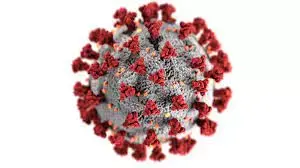‘It’s not your fault,” I told 16-year-old Cara, whose mother died of a SARSCoV-2 infection she gave her. To be clear, the doctor confirmed Cara (not her real name) had passed on the virus and Covid was entered on the death certificate as the cause of death. Cara’s mother had not been outside their home in the weeks preceding her death.
When masks were dropped in the “Omicron’s mild” phase of the pandemic, Cara continued as the lone masker at school to protect her immunocompromised mother, who was undergoing chemotherapy. It was tolerable until a child psychotherapist said on the national airwaves that some girls would continue to mask anyway “to hide their acne”.
His words were used to bully her. Cara left, but without support from teachers she struggled. Her parents pleaded with the school to use the Hepa filter they bought. The school refused.
Cara eventually returned to school unmasked, caught Covid and infected her mam. It killed her. Cara self-harms because she blames herself. She hasn’t been to school since.
Research shows that more than 70pc of SarsCoV-2 transmission in households started with a child.
The incidence was highest during unmitigated in-person schooling. In a recent paper, Dr Pantea Javidan, of Stanford’s Centre for Human Rights, described the ways children’s rights to life, health and safety during the ongoing pandemic have been falsely rendered oppositional to education and development.
Methods used to manufacture consent to forcibly, repeatedly infect children, according to Dr Javidan, include minimising harms to children (“kids don’t get it or spread it”, “it’s mild”) and moral panic around mental health and educational attainment.
Regarding mental health, in August a study looking at paediatric psychiatric emergencies found school openings – not lockdowns – were associated with an increase in the number of emergency psychiatric visits.
In May, a study found that children with and without congenital heart defects showed increased risks for a variety of cardiovascular outcomes (including cardiac arrest, clots, palpitations) after Sars-CoV-2 infection.
In July, a study found that children and teenagers experienced cognitive impairment 12 months post-Covid infection, consistently correlated with poorer sleep and behavioural and emotional functioning.
Last month alone, several studies were published documenting Covid paediatric harms. One found that children and adolescents experience prolonged symptoms post-Sars-CoV-2 infection in almost every organ system.
Study co-author Professor Lawrence C Kleinman said: “We have convincing evidence that Covid is not just a mild, benign illness for children. This is a new chronic illness in children. We need to be prepared to deal with it for a generation.”
Another study analysing paediatric and adult hospitalisations found teenagers were at greatest risk of severe disease among all children. Yet another study showed compelling connections between viral infection and subsequent autoimmune disease. Early in the pandemic, some children showed negligible Covid symptoms, only to later develop organ failure.
Researchers found the children’s immune systems had latched on to a part of the coronavirus that closely resembles a protein found in the heart, lungs, kidneys, brain, skin, eyes and GI tract and launched a catastrophic attack on their own tissues. “Experts” who claimed asymptomatic paediatric Sars2 infections equals mild were catastrophically wrong.
Covid is consistently a leading cause of US child mortality. Paediatric mortality has increased markedly with each year of the pandemic in the US, UK and elsewhere. In 2022, over six times as many children died from Covid than from flu in the US.
The UN Convention on the Rights of a Child requires states to “recognise the right of the child to the enjoyment of the highest attainable standard of health” and to fully implement this right. Children’s rights to education include a safe environment not harmful to their health.
Cara and her parents fought for these rights. They were denied, with devastating consequences. Irish schools are legally obliged to clean indoor air and prevent the spread of airborne diseases. Prevention plan? Three Hail Marys.
In year five of an airborne pandemic, parents, Dr Ciara Steele and Sinéad O’Brien set up Clean Air Advocacy Ireland.
Dr Steele said: “Children are vulnerable, they rely on adults to advocate on their behalf. They have a fundamental right to breathe clean, pathogen-free air in schools. That means CO2 monitors, Hepa filters and ventilation in every classroom.”
A recent study in Finland found air purifiers in day-cares led to a 30pc reduction in children’s illnesses. In March 2022, Italy’s Marche region installed mechanical ventilation in some schools, reducing Covid infections in classrooms by 82pc.
Education Minister Norma Foley previously committed €62m for Hepa filters in Irish schools. Where are they?
WHO advice is clear – protect yourself and loved ones from Covid. Stay home if sick, test, get boosted, ventilate, wear a mask when around others. Unless parents are prepared to say, “We do not consent to repeatedly exposing our children to biohazardous Sars2 in schools”, our consent will be presumed tacit.


It's wack, I remember school, I'm pretty sure we'd be fine if school was every 2 years and kinds went one year on one year off, i guess consistency is good but I'm certain half the time spent there was totally busy work